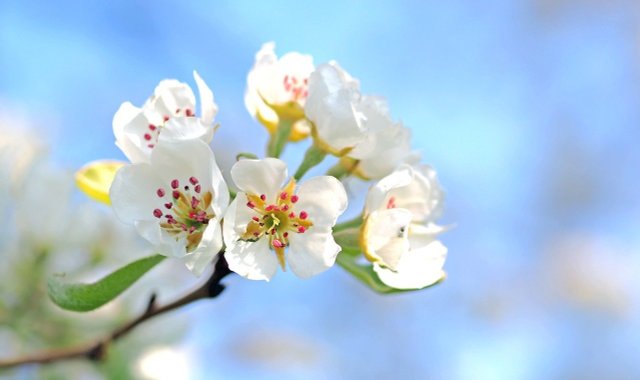
Apple trees can be affected by various diseases and pests. Learn how to control them naturally here.
There are many signs that an apple tree is affected by pests or disease, from maggots in the apple to chewed leaves to spots on the skin. Apple tree diseases can affect both the fruit and the tree, or even both at the same time. Generally, if you catch an infestation early, you can still save his or her crop.
We’ll show you what apple tree diseases and pests are and how you can control them naturally.
Contents
Apple tree diseases

There is a whole range of pathogens that can attack the apple tree.
Here is a selection of the most common pathogens:
- Apple scab (Venturia inaequalis): this is a fungus that you can already recognize during flowering by olive-green spots on the leaves. The spots subsequently enlarge, dry up and turn brown. This can cause the apple tree to lose all its leaves as early as August. Thus weakened, it can hardly set fruit the next year. The fruits remain edible despite the disease, but they can no longer be stored for long. In agriculture, environmentally harmful fungicides are usually used. However, there are also environmentally friendly remedies such as field horsetail broth and preventive measures that you can use to fight and prevent this apple tree disease. Read more here: Apple scab: How to protect your apple tree.
- Apple powdery mildew (Podosphaera leucotricha): Also a fungal disease that causes a white mealy coating to settle on the leaves. This disrupts photosynthesis and causes the affected plant to die. Therefore, it is even more important to detect powdery mildew early and remove infested leaves. You can read more measures against this apple tree disease here: Fighting powdery mildew: these home remedies will help your plants.
- Monilia fruit rot (Monilia fructigena): You often only notice fruit rot when fallen fruit with the typical yellowish-brown mold cushion is lying on the ground. However, fruit that is still hanging is also affected. If the fruit is damaged by an injury or a hole, the fungus can penetrate and cause the apple to rot. The only way of control is to carefully collect fallen fruit and rotten apples on the tree. Otherwise, a new infection will start from them the next year.
- Fire blight (Erwinia amylovora): Fire blight is a particularly serious apple tree disease. Infected trees are usually no longer salvageable in the case of the bacterial disease. The disease got its name because it clogs the conduits of the tree, causing the leaves to turn brown-black and look like they have been burned. If you detect the infestation early, you can cut off infested branches and hope that the pathogen has not penetrated deeper into the wood. Important: Clean pruning shears with alcohol after cutting to disinfect them.
Apple tree pests

In addition to apple tree diseases caused by fungi and bacteria, there are a variety of pests that can attack the apple tree.
Here is a selection of the most common pathogens and tips for environmentally friendly antidotes:
- Codling moth (Cydia pomonella): It is probably the best-known tree pest. Codling moths like to infest native fruit trees. The fruit usually becomes inedible due to the infestation. Codling moths are butterfly larvae that nest in the fruit. Learn here how to recognize the infestation and how you can fight codling moth with natural means: Controlling codling moths: How to get rid of them without a chemical mace.
- Green apple aphid (Aphis pomi): Aphids are also typical pests of apple trees. Their larvae suck on shoot tips, young buds and young leaves, causing them to cripple. They also hinder photosynthesis. How you can recognize the infestation and which household remedies can be used to combat aphids, you can read here: Fighting aphids: Helpful home remedies.
- Spider moths (Yponomeutidae): You can recognize an infestation of spider moths by the silvery veil that the moths can draw over entire trees. The moths leave behind bare, brightly shining trees and shrubs. In addition to the apple tree, the pests also attack other fruit tree species. We show you here what you can do against the moths: Combat gossamer moths – without chemicals.
- Apple blossom weevil (Anthonomus pomorum): This weevil overwinters in bark crevices. The damage is usually only noticed towards the end of the apple blossom, when numerous blossoms do not want to open, because the buds are eaten empty by the larvae of the beetle. Therefore, precaution is absolutely necessary. Even before the leaves sprout, you should put a twenty-centimeter-wide ring of corrugated cardboard around the trunk. The beetles will hide in the cardboard in the evening and you can collect them the next morning.
- Preventing diseases and pests in apple trees
- To prevent pests and apple tree diseases, always keep a close eye on your apple tree. Use the fall and spring to prune your apple tree, identify infestations and pick off rotten fruit. During this time, you should inspect your fruit trees regularly. Also, you can put a glue ring around the trunk in September to make it harder for pests to enter the tree.
The type of tree also plays a role in susceptibility to apple tree diseases: there are, for example, several scab-resistant varieties, which often have a hard time not only with apple scab, but also with powdery mildew. It is best to seek advice on this from a specialist retailer.
It is also important for the health of the tree that you choose a suitable location when planting it. You can find out which location factors you should pay particular attention to when planting a fruit tree in our guide.

